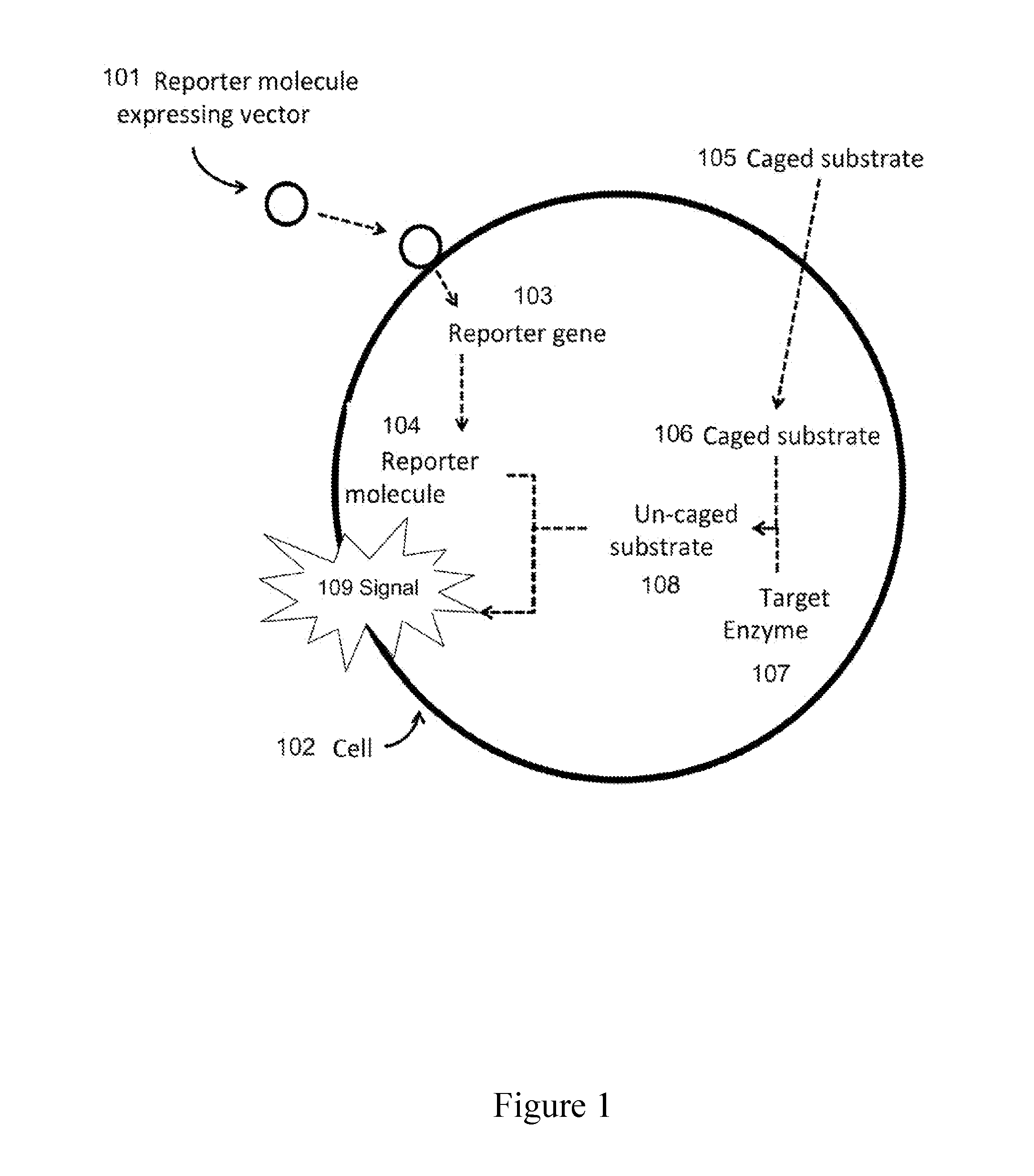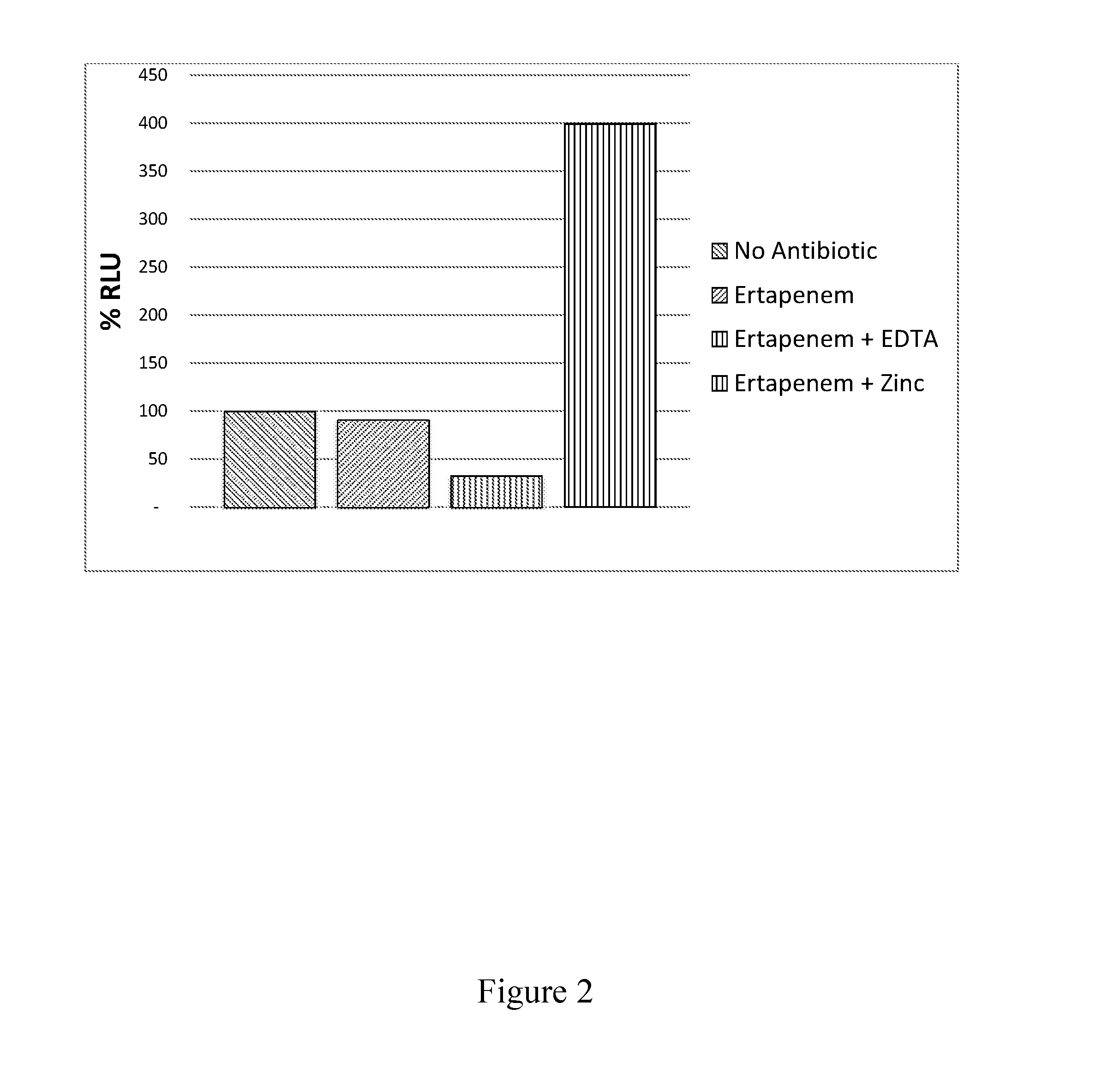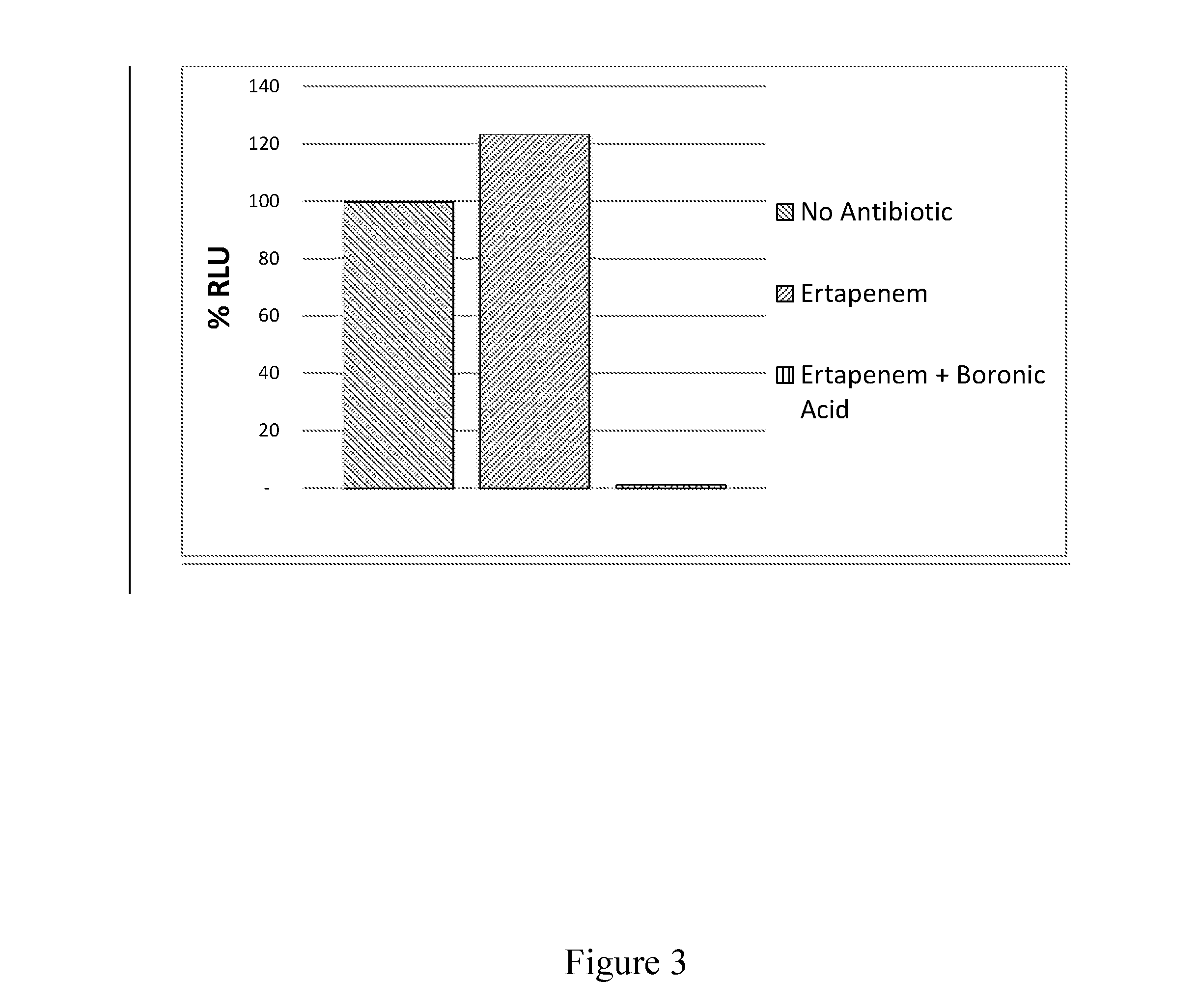Mechanisms of Antimicrobial Susceptibility
a technology of antimicrobial susceptibility and mechanisms, applied in the field of mechanisms of antimicrobial susceptibility, can solve the problems of inability to determine the susceptibility of the organism to an antimicrobial, inability to determine the possibility of an organism expressing the gene, and inability to determine the susceptibility of the organism to the antimicrobial, etc., to achieve the effect of inhibiting growth
- Summary
- Abstract
- Description
- Claims
- Application Information
AI Technical Summary
Benefits of technology
Problems solved by technology
Method used
Image
Examples
example 1
Detection of NDM-1 via an EDTA Inhibitor
[0118]Carbapenem non-susceptibility may be imparted by carbapenemase enzymes as well as by other mechanisms including over expression of non-carbapenemase β-lactamase enzymes and porin mutations. Carbapenemases are derived from the classes including A, B, and D. Class A carbapenemases include those encoded by the KPC (K. pneumoniae carbapenemase) genes and are susceptible to inhibition by β-lactamase inhibitors. Class B carbapenemases include those encoded by the IMP-type (metallo-β-lactamases), New Delhi metallo-β-lactamase (NDM-1), and VIM (Verona integron-encoded metallo-β-lactamase) genes and require ionic metal to function. Class D carbapenemases include those encoded by the OXA (oxacillinase) genes and are not susceptible to inhibition by β-lactamase inhibitors.
[0119]An NDM-1 detection assay is produced using a luciferase-expressing non-replicative transduction particle specific to Enterobacteriaceae (as described in PCT / US2014 / 026536, E...
example 2
Detection of KPC via a Boronic Acid Inhibitor
[0123]In another embodiment of the invention, a KPC detection assay is produced using a luciferase-expressing non-replicative transduction particle specific to Enterobacteriaceae as described in PCT / US2014 / 026536, Example 1, ertapenem and the β-lactamase inhibitor boronic acid.
[0124]A culture of a clinical isolate of a KPC-expressing E. coli was prepared in LB media and used to determine the response of the NRTP reporter in the presence of ertapenem, and boronic acid. The replicates of the assay were prepared mixing 50 μL of the cell culture at an OD600 of 0.02 to 50 μL of LB media and 100 μL of NRTP reagent prepared in a microwell plate. The assay was incubated for 2 hours at 37° C. under the following conditions: (1) No additives, (2) with the addition of ertapenem at 1 μg / mL, and (3) with the addition of ertapenem and phenyl boronic acid 400 μg / mL. After the incubation, the samples were assayed for luminescence after the injection of a...
example 3
Determination of Carbapenem Susceptibility Mechanism
[0127]A carbapenem susceptibility detection system (for determining antimicrobial susceptibility phenotype) is produced based on a bacterial luciferase-expressing non-replicative transduction particle (NRTP) specific to Enterobacteriaceae, and a caged luciferase substrate that may be un-caged by a carbapenemase enzyme.
[0128]The bacterial luciferase luminescence reaction requires the bacterial luciferase enzyme LuxAB, reduced flavin mononucleotide FMNH2, a fatty aldehyde such as decanal, and molecular oxygen (FIG. 4). In this reaction, the luciferase enzyme first binds to FMNH2 and mediates a reaction between FMNH2 and molecular oxygen. Next, a fatty aldehyde, such as decanal, reacts with this complex and causes oxidation of both FMNH2 and decanal, resulting in a photon emission.
[0129]Fatty aldehydes such as decanal can be caged by linking to them a molecule (such as a meropenem-based molecule). When caged, the fatty aldehyde is una...
PUM
| Property | Measurement | Unit |
|---|---|---|
| Electrical resistance | aaaaa | aaaaa |
| Antimicrobial properties | aaaaa | aaaaa |
| Luminescence | aaaaa | aaaaa |
Abstract
Description
Claims
Application Information
 Login to View More
Login to View More - R&D
- Intellectual Property
- Life Sciences
- Materials
- Tech Scout
- Unparalleled Data Quality
- Higher Quality Content
- 60% Fewer Hallucinations
Browse by: Latest US Patents, China's latest patents, Technical Efficacy Thesaurus, Application Domain, Technology Topic, Popular Technical Reports.
© 2025 PatSnap. All rights reserved.Legal|Privacy policy|Modern Slavery Act Transparency Statement|Sitemap|About US| Contact US: help@patsnap.com



